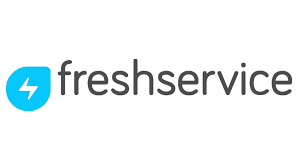January 13, 2020
Sometimes folks wonder about how we do things here in ITS. For example, how do we keep track of the hundreds of calls that come into the Help Desk daily and then get them to the right people when they can’t be solved immediately by the front desk staff? For quite some time now, we’ve been using a home built (Thanks Frank!) call tracking database tool. While it has served us well, it’s not something that’s easy to maintain any longer, and we need to integrate this system with several other campus systems for better functionality. Starting this week, ITS staff will be switching to a new system called Freshservice by Freshworks. This system, whose first customer was a College in Australia, will be the tool we use to keep track of incoming requests for help, and to route those help calls and trouble tickets to the right folks within ITS. We’ll be better able to track how many calls of a particular issue we get, and this will help us more quickly infer when something has become a system level problem that’s impacting more of the campus. Likewise, we’ll know when we need to push information out to the community more effectively and/or revise our online documentation. We’ll also be able to better document work-arounds and short term solutions and propagate those solutions to similar calls. And we’ll be collecting call analytics to make available to our team leaders to allow for more strategic decision making.
Most folks won’t notice any difference in their interactions with ITS staff. However, the staff answering calls will have a system that will bring up information about the caller, their location on campus, and eventually, the computer(s) or technology they might be calling about or using, past history with their equipment, as well as potential solutions to common problems that will pop up for the help desk staff as they enter the problem information into the system. Some calls will automatically kick off processes that will notify the right people who need to take actions, including some of those outside our department who’s approval or actions might be needed for the request, or when multiple offices need to be involved in a request.
Some requests we receive are what we call “self-service” which means that these are requests, such as certain software installs, that community members can address themselves with the right resources at hand. The new system will be better able to automatically direct those resources to callers via email. This will make our responses quicker for callers, and will free up staff time to address issues that require human intervention. While much of this is already available through our current Help Topic Knowledge Base, the new system will be more integrated and hopefully easier for everyone to find answers within.
As we integrate more parts of the new system, we’ll be able to better integrate our knowledge base into the help portal, so that callers will have more resources to answer their own questions with a tool that dynamically finds answers as they type their question into our new ITS Support Portal. Now you might ask, what do you mean “type”? We’ve had a link “Submit a Help Request” on our main ITS page through which folks can submit a help request when they can’t phone us directly and can’t send email. The new system will integrate that service with our internal knowledge base to help our community find answers faster, more efficiently and through which calls that can be automatically routed, so that the right folks will be able to get working on solutions even faster. Further enhancements of this new tool, that won’t be implemented right away but eventually, include change management, software release management, physical and software inventory, project and contract management. And all of this through a common unified interface that ties these services together.
For our community, some of emails from us may look a little different, being from “support@swarthmore.edu” and may refer to the ITS Service Desk with different ID numbers than existing users might be used to. In addition, callers from our community will be able to track the status and updates to their tickets in our system through the new Service Portal.
Through all of this, however, please note that our commitment to your security will not waiver. The new emails from us will still never ask for passwords, or other information we’ve said never to give out through random emails sent to you. If in doubt, please still call or email us and ask if something seems suspicious to you!

